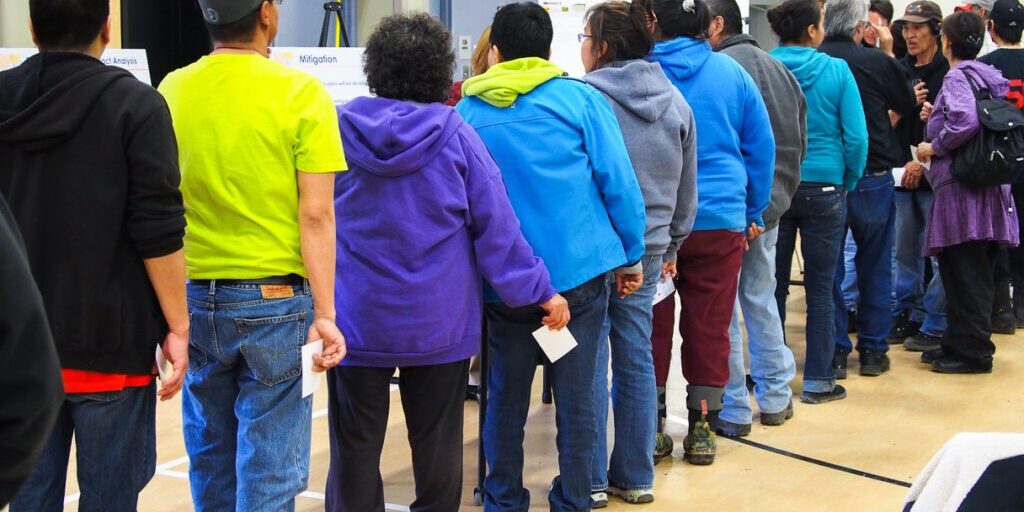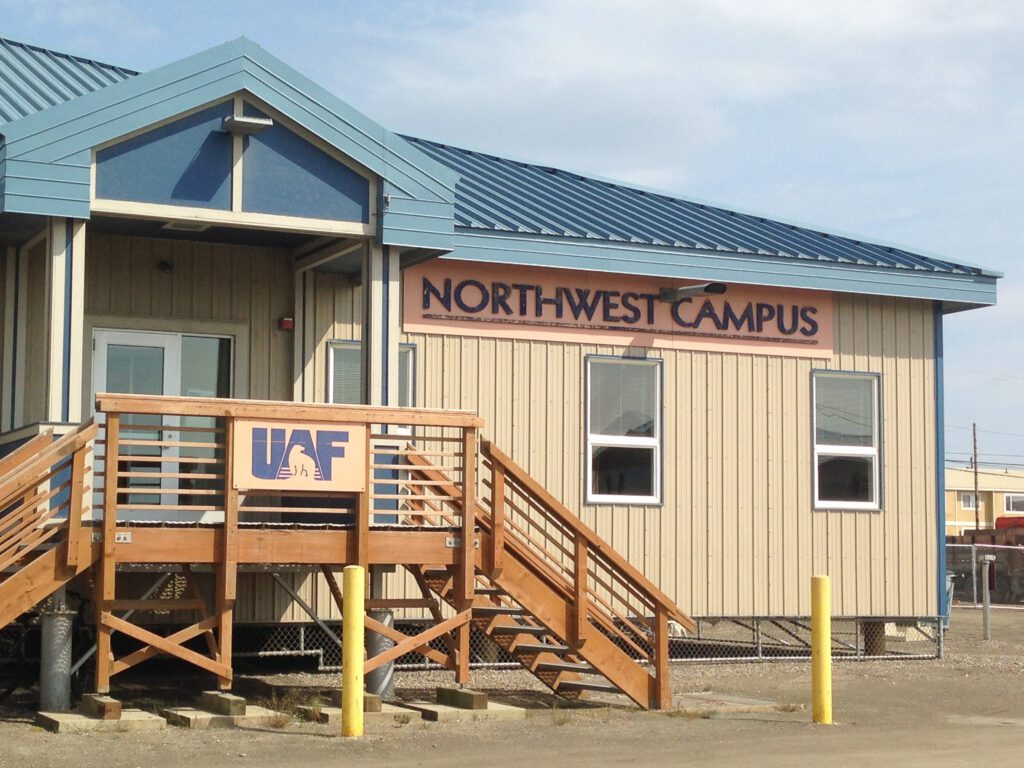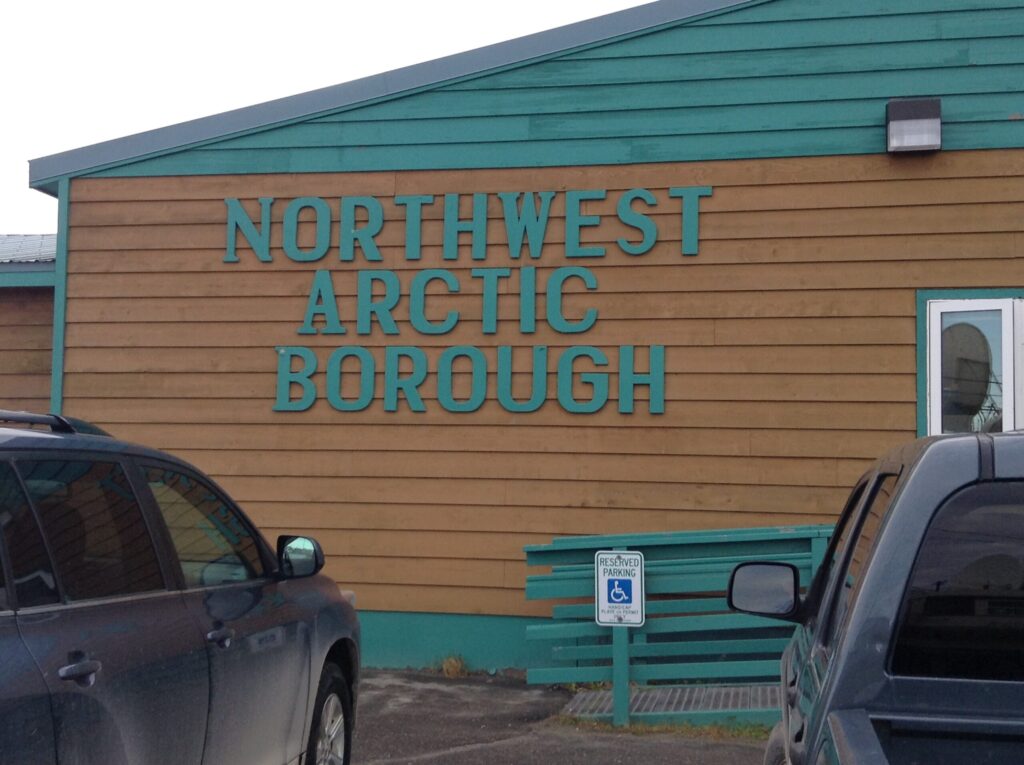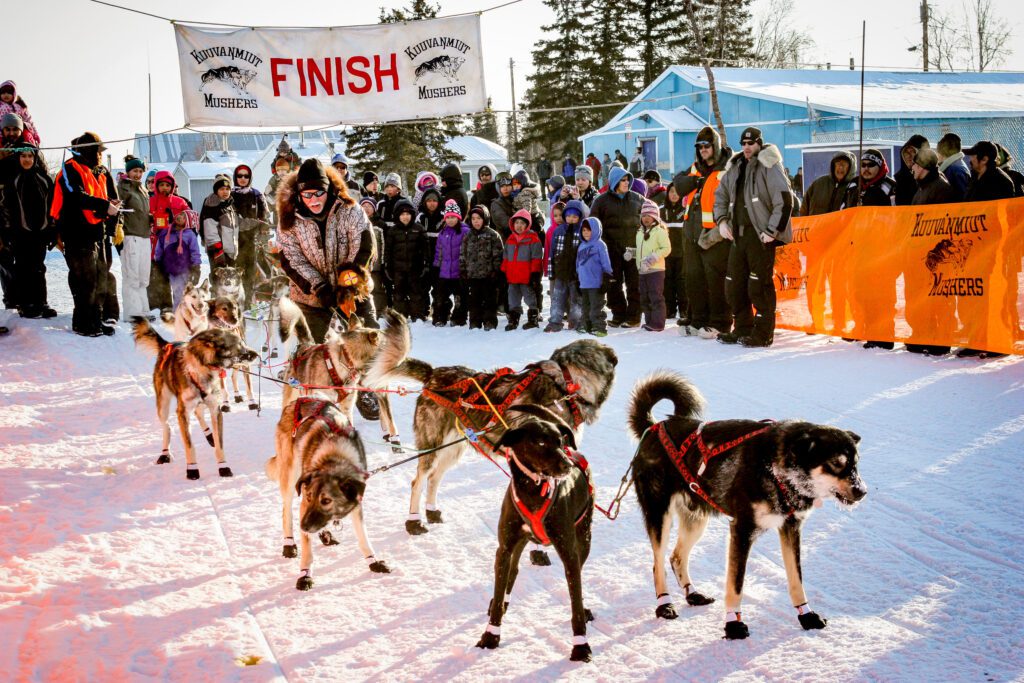Residents from Kobuk, Shugnak and Ambler gathered in the Kobuk school Monday for meetings about the status of a state-backed industrial road that could pass through the region.
Even getting there presented some challenges, however. Lesley Lepley works with Dowl HKM, the company contracted by the state to handle logistics for moving the Ambler Mining District Industrial Access Road project along. Lepley said days of rain and seasonal runoff left the Kobuk River swollen, with soft ground making the Ambler runway unusable.
“We had charter flights arranged to bring people from Ambler, and unfortunately both runways got shut down in Ambler,” Leplet said. “Our Caravans couldn’t land, so we had to rely on people boating.”
The Alaska Industrial Development and Export Authority, or AIDEA, organized the meeting. Leaders from all three communities came together first for a question and answer session with AIDEA representatives. Afterwards, the public gathered in chairs and bleachers for a presentation on the road’s development status, first in English, then translated into Inupiaq.
Perspectives on the proposed road continue to be mixed. Many who spoke at the meeting support the potential for jobs from road work and at the eventual mining district.
Miles Cleveland lives in Ambler, and said the region needs jobs to survive. “We need jobs to continue to pay for our light bills, our water and sewer—those take money.”
Like many other aspects of the proposed road, however, there is very little hard data on just how many jobs it would bring, and to whom.
AIDEA is currently selecting a contractor to begin work on the massive Environmental Impact Study that’s an essential part of the Federal approval process for any road project. Fred Sun, from Shugnak, is on the board of directors for the NANA regional corporation. He spoke at the presentation’s close about the need to wait until environmental data is collected to make a decision on whether or not to move forward with the road.
“Whether or not your decision is to support this road or go against it, I think it’s just as important you support the EIS process,” he said, “because not only is it going to be helpful for the construction of this road, but it’ll be helpful for other projects in the future.”
While a complete environmental impact study wouldn’t be a green light for the road, others feel like the project is advancing toward a point of no return. It’s not clear how frequently AIDEA or the state’s different permitting agencies have shut down development projects after conducting the EIS process.
Jill Yordy is in charge of mining and clean water programs at the Northern Center in Fairbanks. She said even at this point, the rhetoric from the state is shifting.
“One of my big concerns related to that, is that the conversation will then be framed to be ‘what route should the road take,’ not ‘whether or not there should be a road.’ And I think that’s a really important conversation to have. We need to decide whether or not a road in this region is really acceptable before we try to figure out what route it should take.”
AIDEA is hoping to start the EIS process this summer. They’re holding a public board meeting in Anchorage on Wednesday at 10 a.m. The public is encouraged to call in with comments.
A link to AIDEA’s public board meeting agenda, and instructions for submitting public comment, can be found on on their website.







